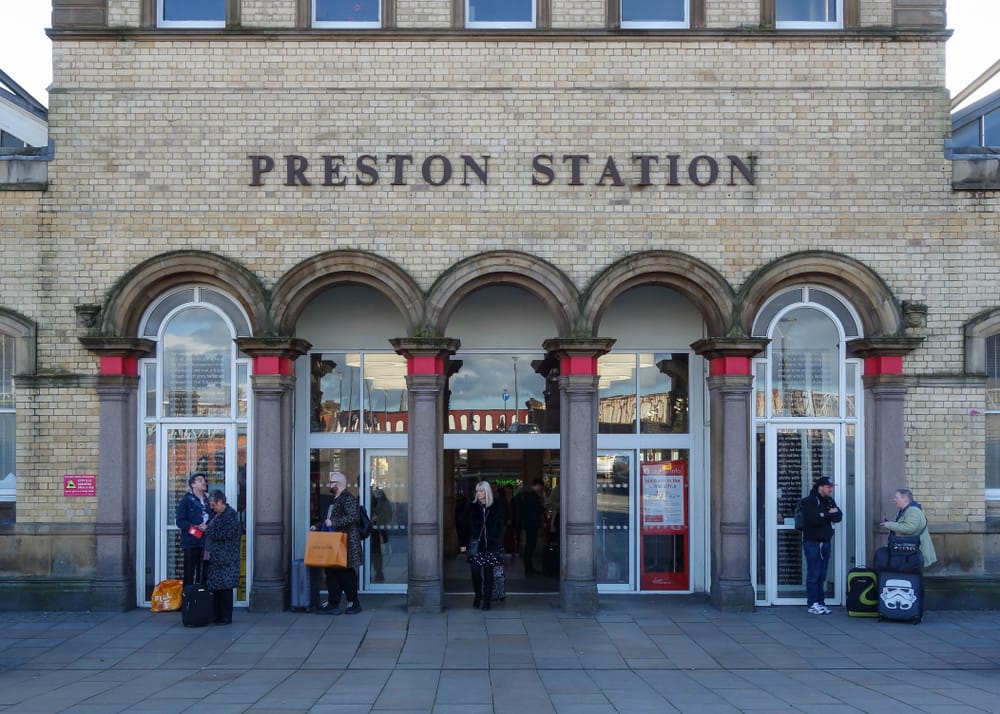Preston has a rich industrial and transport history which can be seen woven into its streets, buildings and waterways. From the echoes of the cotton trade to the hiss of steam engines and the clatter of Victorian arcades, Preston has long been a city shaped by invention, industry and movement. Whether you’re here for a short break or exploring your surroundings while staying in the city, there are plenty of ways to get a taste of Preston’s industrial legacy. So what can you discover about Preston’s industrial and transport heritage? And where should you start?
From cotton to innovation: Preston’s industrial rise
Before we take a look at modern day Preston, it’s important to understand the history behind it. In the 19th century, Preston thrived as a centre of cotton and textile production. Like much of Lancashire, it was swept up in the Industrial Revolution, transforming from a market town into a powerhouse of mills and factories. At its height, the city was home to over 40 mills, drawing in thousands of workers and fuelling Britain’s global textile trade. But industry in Preston wasn’t just about cotton. Engineering, railways, and dock work also played a huge part in the city’s identity.
So what can you discover about Preston’s industrial and transport heritage?
Preston has a wealth of industrial heritage that can make any visit to the city even more interesting. Some of the best places to visit, and things to do, if you’re interested in industrial heritage, include:
- Ribble Steam Railway & Museum
- Preston Docks
- Hidden gems
- Preston Railway Station
Ribble Steam Railway & Museum
One of the best places to connect with Preston’s industrial and transport past is the Ribble Steam Railway & Museum. Tucked away at Preston Docklands, this working heritage railway offers nostalgic steam train rides through the riverside landscape, alongside a brilliant little museum that houses a collection of engines, wagons and industrial artefacts.
It’s great for families, railway enthusiasts or anyone who loves a dose of history with a bit of character. Seasonal events like the Santa Steam Specials or Diesel Gala weekends bring even more charm to the experience. There’s also a café and gift shop, and the staff and volunteers are always keen to share their knowledge.
Preston Docks
Opened in 1892 and once the largest inland dock in the UK, Preston Docks were a huge feat of engineering. For almost a century, the docks bustled with cargo ships, workers, cranes and warehouses, connecting the city to global trade routes. When the docks closed in 1981, the area began a slow reinvention.
Today, the docks are home to housing, businesses, shops and leisure spots, but you can still sense the industrial scale and legacy. Look out for the distinctive swing bridge, remnants of old machinery, and the Ribble Pilot pub, which occupies the former control tower. A walk along the waterfront offers lovely views and a feel for what has made this area thrive for centuries.
Hidden gems and industrial buildings with a story
Much of Preston’s industrial charm lies in the smaller details that can be found dotted throughout the city. One standout is the Miller Arcade, a beautiful 1890s shopping arcade that feels like stepping into Victorian elegance. With its ironwork, tiles and domed ceilings, it was once a symbol of high end retail in an industrial town.
Elsewhere, look for former mill buildings. Even if they’re not open to the public, their brickwork, chimneys and vast windows still reveal the history of the area. Tulketh Mill for example is now office space and commercial, but it’s still bursting with heritage.
Preston Railway Station
A Victorian powerhouse still in use, Preston Railway station remains one of the most important stops on the West Coast Main Line. It has been a key part of the city since 1838, and though it’s had many updates over the years, parts of the station retain their Victorian grandeur and solid engineering.
Trains from here once carried cotton and coal, workers and soldiers. Today, it remains a major transport hub, connecting Preston to cities across the UK.
Separately from its industrial heritage, this station also played an important role in the First World War, when it was well-known for its free buffet service for servicemen and women. In fact, 400 women working 12-hour shifts served over 3 million men between 1915 and 1919. You can find out more about this in the waiting area on platforms 3 and 4.
Expert tips for exploring Preston’s industrial story
One of the best ways to discover Preston’s industrial and transport heritage is on foot. You can create your own self-guided tour starting from the station, passing through the city centre to Miller Arcade, and then heading towards the docks and Ribble Steam Railway.
Keep your eyes open for plaques, street names and unusual architectural features, and we are sure you’ll be surprised how much history is hidden in plain sight. Whether it’s your first time in the city or you’re a regular visitor, taking time to trace the story of industry in Preston adds another layer to your trip.

